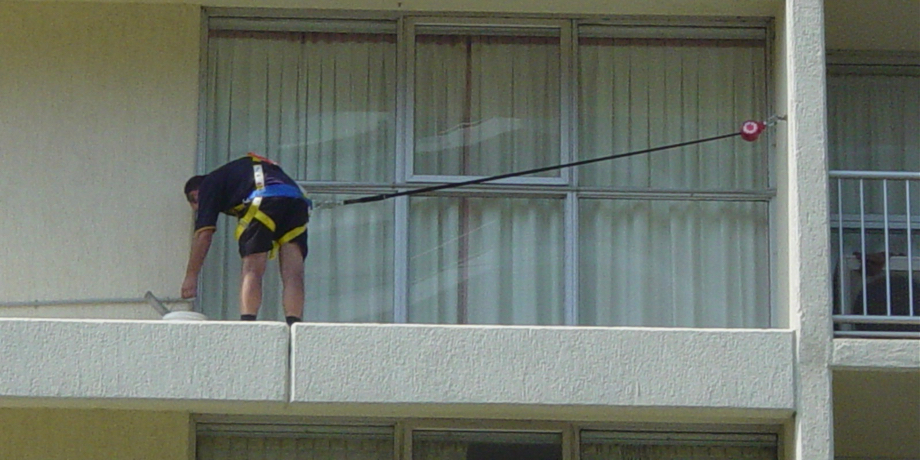
The owner or manager of a structure that has public areas, or employs persons to work on the structure has a duty of care under the Workplace Health and Safety Act. The safety and wellbeing of workers and the public that maintain or use the structure is their responsibility. Ensuring that workers and other persons are not exposed to health and safety risks is an important aspect of their role.
Most facility managers are aware of their obligations, however, when a work positioning or a fall arrest system is required to access a facade or rooftop, they may struggle. Without training or specialist advice, it is assumed that these safety systems are compliant. The competence of the contractors that use the systems is also rarely questioned. (BTW if you see someone on your site operating like the bloke in the main image. Get him down straight away…that is not right!)
Height Safety Systems
In 2013 Working at Heights Association members recorded the following data from the inspection of height safety systems on existing buildings.
| Item | Total surveyed | Total passed | Percentage failed |
| Anchor points | 3245 | 2260 | 31% |
| Horizontal staticlines | 119 | 41 | 65% |
| Vertical staticlines | 14 | 2 | 86% |
| Fixed ladders | 233 | 14 | 94% |
| System layout | 86 | 4 | 95% |
This data should raise the alarm for facility managers. The height safety systems installed on their building may not be compliant and they may be placing users at risk of a fall should the system fail. While these figures seem extraordinary, Height Dynamics inspectors do find many non-compliant systems. Our blog series Dangerous Installations demonstrates that this concerning issue is widespread.
Queensland Workplace Health and Safety have recently published a document titled Anchors for Building Maintenance. This provides further advice on the safe use and maintenance of height safety systems.
Contractors Working at Height
The Workplace Health and Safety Regulation defines working at height on structures (such as buildings) to maintain or repair the building, as high-risk construction work. The regulation is very clear on how to manage the risk associated with working at heights.
When employing persons to work at height on your building make sure you ask the following
- Are the contractors suitably trained?
- Can the contractor produce a equipment register showing current certification?
- Has the contractor provided a safe work method statement
- Are the risks of dropped objects controlled, and
- Has the contractor developed a suitable rescue plan?
Having trades persons that are competent and trained, are using systems and equipment that carry current certification and operate to a clear documented Safe Work Method Statements will go a long way to reduce the likely hood of an incident.
Disclaimer – This article provides guidance only and should be considered a starting point for managing height safety risks on your building. Height Dynamics recommends that help is sought from suitably trained and experienced persons to assist in the development of an effective management plan.
